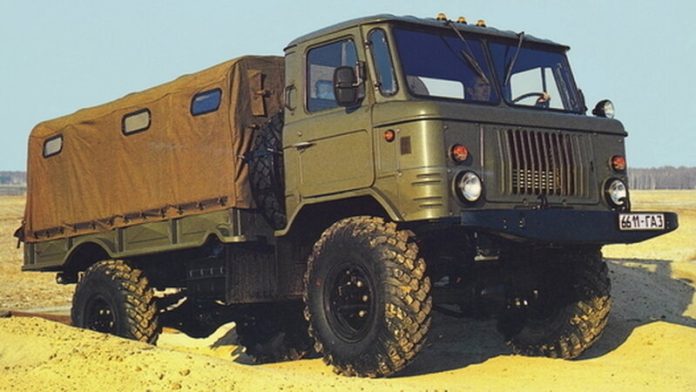The Soviet military industry regularly carried out orders from the Ministry of Defense, developing and producing new equipment for army needs.
With the start of military operations in Afghanistan, a large amount of military equipment was sent there along with the contingent of Soviet troops, among which the shortage of transport for transporting personnel and cargo was especially acute.

It was decided to equip the troops with multifunctional trucks, already tested in extreme conditions and considered reliable. One of these vehicles was the army GAZ-66, nicknamed “shishiga” by the soldiers.
The truck was produced in two versions – civilian and military. However, the Soviet military quickly became disillusioned with it: the vehicle did not live up to expectations and had a lot of shortcomings.

Why “shishiga”?
Many believe that the GAZ-66 received its nickname because of the model index – “66”. Indeed, it was often called “shishiga” by the people, which was partly a reference to the numbers (“66 GAZ”). But there was another reason: in Russian tradition, the number 6 was associated with evil spirits, and when the car constantly broke down, the soldiers seriously began to believe in the “curse” of this number.


Developed back in 1957, the GAZ-66 was not put into production for a long time due to numerous shortcomings. The problems turned out to be so serious that some of the truck’s creators even wondered: could the index be the reason for all the failures?
Why did the military hate the “shishiga”?
In Afghanistan, the GAZ-66 was used not only as a transport vehicle, but also as a mobile firing point – machine guns and mortars were installed on it. However, if in the USSR the truck showed itself well in agriculture, then in the mountains of Afghanistan it turned out to be practically useless.
On climbs, the engine often stalled at low revs, and due to the thin mountain air, fuel consumption increased sharply. The engine power dropped, and the loaded truck barely crawled up. Often soldiers had to walk and tow the “shishiga”.

But the main reason for the hatred of the GAZ-66 was its deadly design. The driver’s cabin was located directly above the front wheels, so if a mine exploded, the crew had practically no chance of survival. The Dushmans knew this weakness and specially mined the routes of Soviet columns.

For comparison, the driver of the KrAZ and Ural trucks sat further from the wheels (0.8–1.2 meters), which significantly increased his chances of surviving an explosion. Nevertheless, the “shishigas” continued to arrive in Afghanistan until the very withdrawal of troops, replenishing the losses of equipment.

Everyone knew that the GAZ-66 was ill-suited for warfare in the mountains – from local officers to the top leadership of the USSR. However, nothing was changed: funding for the development of new models was never allocated, and the troops were forced to use outdated equipment until the very end.









